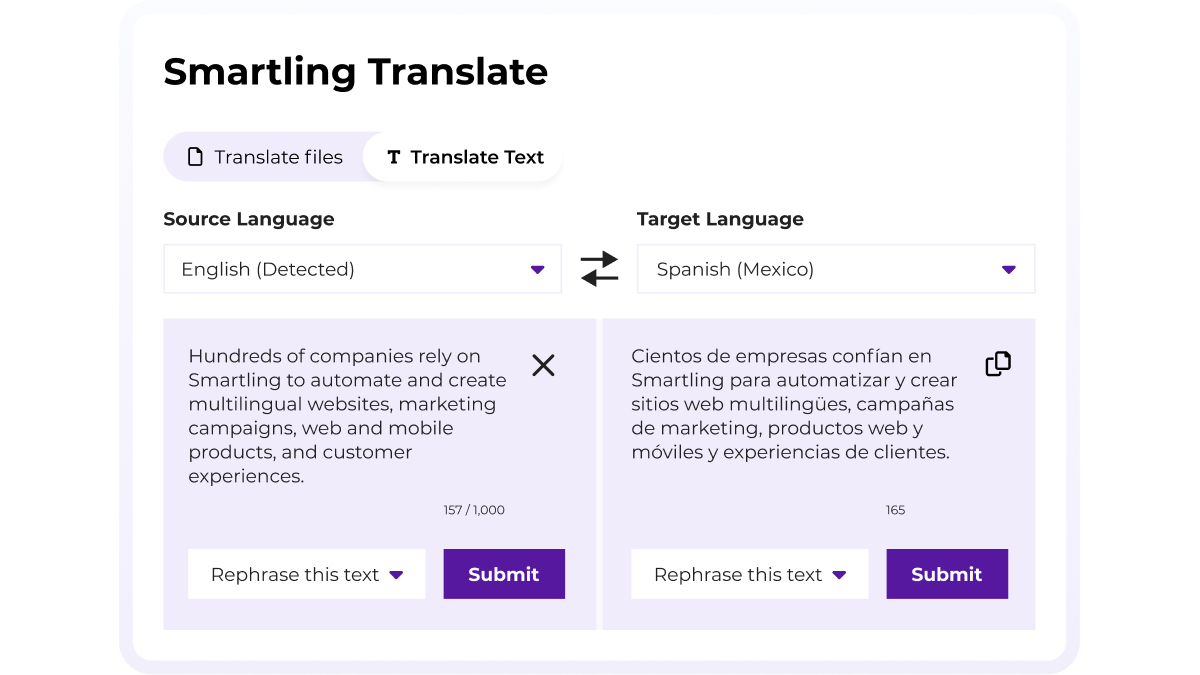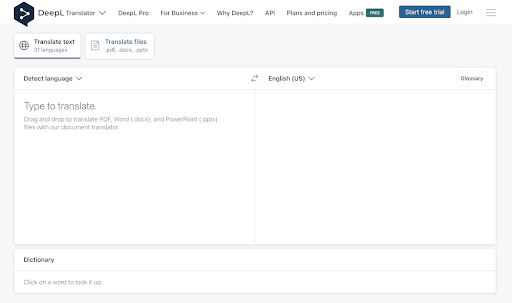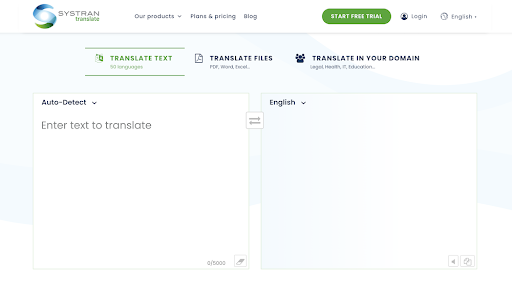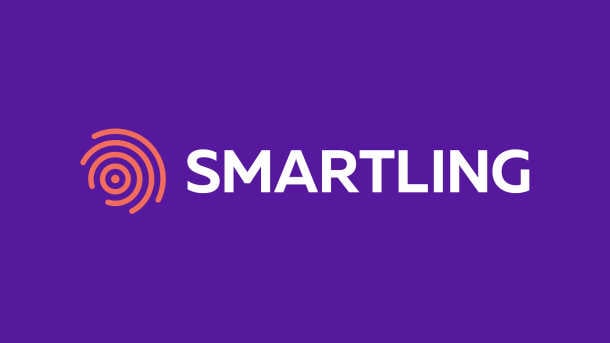Don DePalma, Chief Strategy Officer at Common Sense Advisory, made the following observation:
“Translation strategies that rely on human output alone have already been overwhelmed by the explosion in content and the imperative to rapidly enter new markets.”
More than likely, you’ve seen this to be true in your own organization. But, even if you’re currently getting by with a 100% human-driven approach, that’s unlikely to be scalable. You’ll need to leverage a mix of human and machine translation (MT) as your business expands and more content needs to be translated.
The 7 best machine translation services
Which machine translation service(s) should you choose? Here are overviews of several of the best to help you decide.
Smartling
Smartling offers a number of enterprise machine translation options—all powered by LanguageAITM technology. With them, customers can produce up to 350% higher quality translations instantly, at a fraction of the cost of human translation.
Smartling’s Neural Machine Translation (NMT) Hub is a multi-engine, AI-powered workspace for managing your machine translation needs at scale. It uses artificial intelligence (AI) to pick the best MT engine for each project, giving you the highest quality translations in milliseconds.
Plus, the platform can handle all of your translation needs across complex formats, within one central workspace. That includes machine translation and human translation, as well as machine translation post-editing (MTPE).
Image description: Some of the MT engines available in Smartling NMT Hub
Another machine translation option within Smartling’s TMS, Smartling Translate, is a self-service portal for translating files or text securely and instantly. It leverages GPT and multiple engines to improve the fluency and quality of machine translations. No training or setup is required.
 Image description: Product illustration of the Smartling Translate UX
Image description: Product illustration of the Smartling Translate UX
Top features:
- MT models: Integrate Smartling with top machine translation engines, such as DeepL, Watson Language Translator, and others.
- Source GPT pre-edit: Smartling Translate uses the GPT language model to correct mistakes, remove ambiguities, or simplify structures in the source text before MT is applied. This results in higher-quality translations.
- Custom engine training: Tailor a machine learning model to your industry or organization using your glossaries and translation memories. This will ensure accurate, consistent, and on-brand translation results.
Pros:
- The multi-engine approach results in 350% higher quality than translating using a single MT engine.
- You can automate 90% or more of your workflows with our web proxy and integrations.
- The NMT Hub is a completely private and secure environment.
Cons:
- One user mentioned wanting more flexible and granular platform roles. (Source: G2)
- It takes some users time to learn their way around the platform (but our Customer Success team is there to help every step of the way).
DeepL
DeepL is another one of the top machine translation systems. It’s well-known for its ability to consistently capture the meaning of source text in different languages. While there’s a paid plan that provides access to additional features, you can start using it for free.

Image description: DeepL Translator free
Top features:
- Editable translations: Review and edit translated text and files as needed.
- CAT tool integration: Integrate DeepL’s translations into other translation tools, such as Smartling.
- Apps: Use DeepL on the web or via the desktop and mobile apps.
Pros:
- In many cases, DeepL outperforms other MT engines in terms of translation quality.
- Thanks to machine learning, DeepL’s translations improve as you continue using it.
- If you upgrade to the Pro plan, you can work on unlimited translations.
Cons:
- With only 31 languages supported at the time of writing, DeepL is among the least flexible as far as language pairs.
- You can only upload the four most common document types and the per-user per month maximums for most plans are low.
Yandex Translate
Next is Yandex Translate, a straightforward and affordable machine translation service. You can use it to translate text and documents, websites, and images. Or to provide multilingual customer support via messengers or live chat applications (via the translation API). You can also integrate it with translation management systems like Smartling.

Image description: Yandex Translate free web version
Top features:
- Model retraining: Train the model on your data to improve the quality of machine translations in your area of expertise.
- Language detection: Yandex will determine the language of the source text. (Optionally, you can provide language code hints to narrow it down.)
- Glossary: Improve the accuracy of translations on specific topics by saving words or phrases with a single translation.
Pros:
- The user interface is simple and user-friendly.
- More than 85 languages are supported.
- Yandex Translate has an offline mode so you can work on language translation projects without an internet connection.
Cons:
- Glossaries are only supported for some language pairs.
- Some users have had issues with translation quality for longer sentences or casual language. (Source: G2)
Amazon Translate
Instead of basic machine translation, which doesn’t consider context, Amazon Translate uses a neural network. It mimics the way the human brain works, taking into account already-translated content and the context of the source sentence. This allows it to translate content with a high level of accuracy and fluency.
Top features:
- Active Custom Translation: Provide parallel data—examples of how you want text to be translated—to customize your machine translations.
- Batch translation: Translate multiple documents simultaneously.
- Automatic source language detection: Even if there’s no language code, Amazon Translate can identify the source language.
Pros:
- Define custom terminology specific to your company, domain, and industry to reduce the need for post-editing.
- The pay-per-use pricing model makes controlling translation costs easier.
- Security features include encryption and an AWS Identity and Access Management (IAM) permissions policy.
Cons:
- You’ll need coding experience or a developer to integrate Amazon Translate with translation platforms. (Source: G2)
- Amazon Translate supports 75 languages, which is fewer than some alternatives.
SYSTRAN Translate
As with the above, you can use SYSTRAN Pro to translate file types from PDFs and emails to PowerPoints and Excel sheets. There’s an online editor available. Yet, you can also integrate SYSTRAN with CAT tools and translation management systems like Smartling.

Image description: SYSTRAN Translate free version
Top features:
- Advanced user dictionaries: Ensure accurate translation regardless of context by setting custom rules related to inflection, homographs, morphology, and more.
- Translation model training: Train a custom model with your translation memories and use automated scoring to evaluate the model.
- SYSTRAN Pure Neural Server: Opt for this on-premise solution if yours is a large enterprise with strict security requirements.
Pros:
- SYSTRAN Pro is available in 55 languages.
- You can translate unlimited text when you upgrade to Pro.
- Translate for specific domains including health, legal, education, technology, and agriculture.
Cons:
- A couple of reviews have revealed disappointment with SYSTRAN’s customer service. (Source: Capterra)
- Translated documents may not always retain their original layout. (Source: Capterra)
Google Cloud Translation API
Google Cloud Translation API is a machine learning service with which you can integrate websites or programs. It’s offered in two editions, both of which use neural machine translation and support over 130 languages.
Top features:
- Custom models: Import sentence pairs to train a custom model on your domain.
- Model selection: Choose between Google’s neural machine translation model, a custom model of your own, or a custom model created by someone else.
- Audit logs: Understand the who, what, and when of actions taken within your Google Cloud projects.
Pros:
- Your first 500,000 characters are free each month in both the Basic and Advanced editions.
- Batch translation is available.
- You can add Identity and Access Management roles in the Advanced edition for enhanced security and better access control.
Cons:
- The usage-based pricing model can mean high costs for companies with large amounts of text to translate. (Source: G2)
- Some find the setup and integration process complex. (Source: Capterra)
Know when to use machine translation
Given the speed and cost-effectiveness of machine translation, it may be tempting to use it for everything. But human translation is better in some cases, including for content that requires a great deal of creativity or brand-specific elements to make the desired impact.
MT, on the other hand, is best for content that’s instructional or perishable, especially if you need to translate it at high volume. What content may fall into these categories?
- SEO content such as blog posts
- Weather, sports, and news content
- Marketing materials
- Product information catalogs and product manuals
- Commercial contracts
- Drug warnings and clinical research
And these are just some examples. Help documentation, legal or regulatory content, and user-generated content are among the most popular content types translated with MT.

Yet, even for content that can be machine-translated, post-editing may still be necessary. Among other types, it’s recommended for all of the following:
- Product manuals
- Marketing materials
- Drug warnings and clinical research
- Commercial contracts
Could you use a more in-depth overview of when to use MT vs MTPE or human translation? Check out this presentation by Smartling’s Director of AI and MT Deployments, Alex Danishevsky. There are certainly differences between the three that should guide your decisions.
But it’s also vital to recognize the impact of MT advancements and adapt accordingly. Smartling’s Founder and President, Jack Welde, described neural machine translation this way:
"It is gradually eliminating the demarcation between human and machine translation. It is creating more opportunities for a productive closed loop between machine and human, including machine-enabled tools that make the human more productive, and human inputs that make the machine more accurate going forward.”
Just as it’s important to know when you can use MT alone, it’s valuable to understand when MTPE by a professional translator is best. Whichever option is right, though, you can leverage Smartling’s technology to strike the perfect balance between quality, cost, and speed.
Check out our 5-minute demo to see how.






